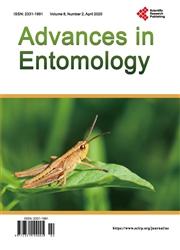Morphological Identification of Edible Termites (Isoptera) in Luanda Sub-County, Kenya
引用次数: 1
Abstract
Termites are social insects that live in colonies underground. Globally, there are 3000 termite species, of which 39% are found in Africa. Termites are used as food and livestock feed in most communities of the world. In Kenya, termites are consumed by many communities, especially in the western region. Termite species diversity across different parts of the Luanda sub-county was established as there are many edible and non-edible species in the area. This study assessed the species diversity of termites in Luanda sub-county, and characterized them morphologically. Termites were sampled in Luanda sub-county using the line transect method. The collected termites were preserved in tubes containing 70% Ethanol. The preserved samples were taken to the National Museums of Kenya for morphological identification up to species level. Species richness of each habitat was analyzed for diversity (Shannon-Wiener) index and Shannon index by using Vegan package version 1.16 32 in R. The differences in species composition and diversity of termites were analyzed using one-way ANOVA. Morphological identification recorded seven species, namely, Macrotermes herus, Macrotermes spp1, Macrotermes sp1, Pseudocanthotermes grandiceps, Macrotermes bellicosus, Macrotermes spp2 and Pseudocanthotermes militaris. The results of this study showed that the Shannon diversity index H was 0.3606 while Simpson index D was 0.20644, which implied a high species diversity of termites in Luanda sub-county a leading producer of edible termites in Kenya.肯尼亚罗安达县食用白蚁(等翅目)形态鉴定
白蚁是群居昆虫,生活在地下。全球共有3000种白蚁,其中39%分布在非洲。在世界上大多数地区,白蚁被用作食物和牲畜饲料。在肯尼亚,白蚁被许多社区食用,特别是在西部地区。在罗安达副县的不同地区建立了白蚁物种多样性,因为该地区有许多可食用和不可食用的物种。本研究对罗安达副县白蚁的物种多样性进行了评估,并对其进行了形态学表征。采用样线法对罗安达副县进行白蚁取样。采集的白蚁保存在含70%乙醇的试管中。保存下来的样本被送到肯尼亚国家博物馆进行物种级别的形态学鉴定。各生境物种丰富度的多样性(Shannon- wiener)指数和Shannon指数采用R. Vegan package version 1.16 32进行分析。白蚁物种组成和多样性的差异采用单因素方差分析。形态鉴定录得大白蚁(Macrotermes herus)、大白蚁(Macrotermes spp1)、大白蚁(Macrotermes sp1)、大白蚁(Pseudocanthotermes grandiceps)、大白蚁(Macrotermes bellicosus)、大白蚁(Macrotermes spp2)和军国大白蚁(Pseudocanthotermes militaris) 7种。结果表明:Shannon多样性指数H为0.3606,Simpson指数D为0.20644,表明罗安达副县是肯尼亚食用白蚁的主产地,具有较高的物种多样性。
本文章由计算机程序翻译,如有差异,请以英文原文为准。
求助全文
约1分钟内获得全文
求助全文

 求助内容:
求助内容: 应助结果提醒方式:
应助结果提醒方式:


